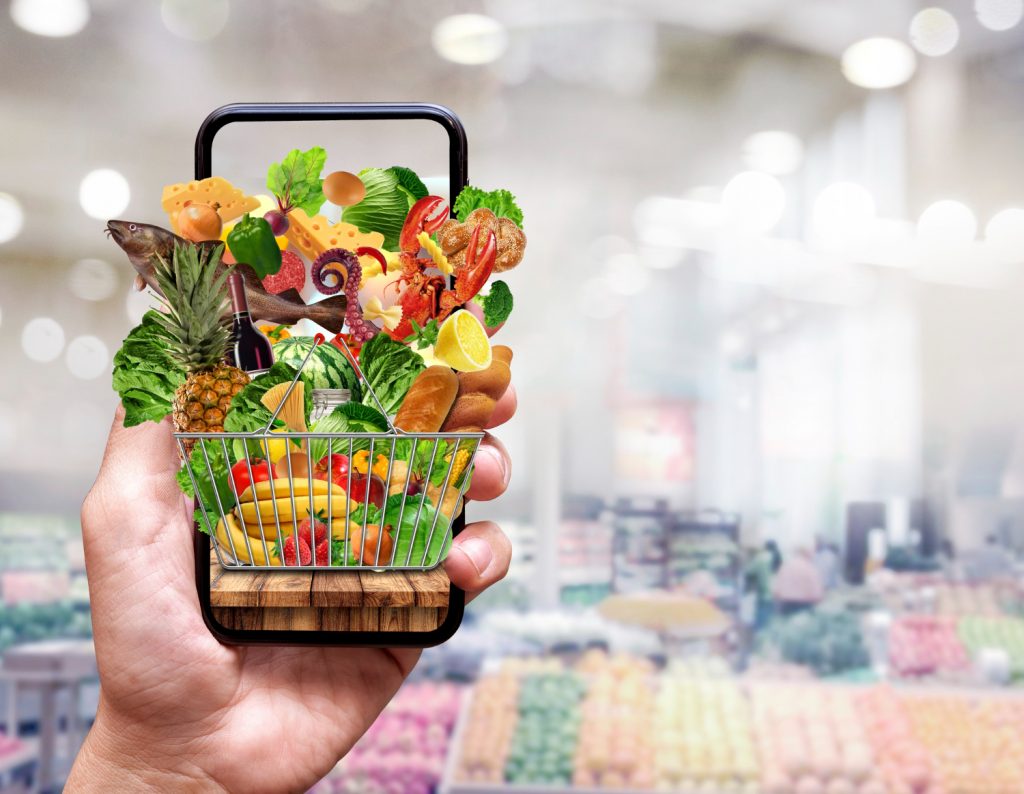Amazon’s same-day delivery model has caused a paradigm shift in the retail world. Specifically, when it comes to day-to-day essentials, retailers that planned to deliver goods in a few days are slowly being overtaken by the digitally-savvy, new-age on-demand delivery organization that is nimble, innovative, and capable of delivering groceries in hours rather than days. This new market expectation is putting immense pressure on grocery retailers as they struggle to stand out in the sea of competition and drive omnichannel excellence.
The Challenges of Omnichannel Grocery
Gone are the days when customers would walk into a supermarket and purchase groceries for the week. In today’s digital era, an increasingly large number of customers are seeking to purchase groceries from the comfort of their homes. Many of these purchases are unplanned and impulsively made as they scroll through the retailer’s site. With a single tap of the finger (and a quick answer to the doorbell), they can meet their weekly needs in a manner previously never imagined. While digital modes of purchasing and delivery work in favor of customers, for grocers, meeting these expectations is not easy.
As customers demand faster and more predictable order fulfillment, grocery stores are reeling under the pressure of stunted growth and margins. Engaging more consciously and meaningfully with shoppers to enhance satisfaction and loyalty is taking a backseat as challenges across the supply chain demand more attention. With online grocery sales posed to increase at a 12% annual rate over 5 years, retailers are facing a number of obstacles, such as:
- Storing food products in a safe, secure, and non-perishable manner.
- Competing with a large number of dark store startups that seem to easily cater to evolving customer needs.
- Overcoming the increasing cost of storage and delivery while managing the growing list of distinct SKUs.
- Meeting the evolving quality and delivery demands of customers located in congested urban centers.
- Retrieving products from warehouses and transporting them to various customer locations quickly and efficiently.
- Keeping track of fluctuating inventory levels in real time, especially for perishable items with limited shelf life.
- Managing spikes in demand during peak hours or holiday seasons that put a strain on resources and logistics systems, leading to delays and stockouts.
The Opportunities That Lie Ahead
For retailers in the grocery industry, the challenges in running their business and standing out in a competitive market are many. But the pace of technological advancements is also creating tons of opportunities. As the speed of manufacturing and supply chain operations continues to accelerate, tech innovations are helping retailers build a more agile, efficient, and transparent supply chain.
Developments in the realm of Artificial Intelligence and automation are enabling retailers to enable reliable, on-demand order fulfillment. These modern ultra-fast goods-to-person solutions help elevate customer experience and profitability while also allowing for:
- Omnichannel excellence: Grocers can drive omnichannel excellence with micro-fulfillment. Micro-fulfillment centers can help eliminate quality and delivery issues and significantly boost business performance across channels and touchpoints. For instance, whether a customer asks for home delivery or store pickup, these fulfillment centers can ensure the product is available whenever and wherever the customer wants it.
- Cost savings: Bidding adieu to massive and centralized warehouses and crafting a culture of micro-fulfillment can enable grocery retailers to cut down the time and distance needed for goods to be sent to customers. Not only does this translate to immediate cost savings but it also mitigates the challenges associated with moving perishable food items, for instance, across vast distances.
- Customer satisfaction: Modern automated storage and retrieval systems are a great option for catering to the delivery demands of the modern customer. These systems help overcome common warehouse challenges while allowing businesses to be nimble to market fluctuations and customer needs. For instance, automated demand planning systems can dynamically adapt to customer demand and intelligently combine different modes of SKU picking to enable mixed-mode order fulfillment.
Drive Innovation and Agility with Carte+
The same-day delivery trend has made centralized warehousing a thing of the past. With customers expecting the delivery of groceries in a matter of a few minutes, retailers must look at driving fulfillment as close to the customer as possible. Unlike conventional warehouses that often involve complex and costly logistics, modern-day retailers must explore the benefits of automation to shorten delivery times, minimize delivery costs, and boost customer satisfaction. Setting up micro-fulfillment centers is a great way to overcome the modern-day challenges of omnichannel grocery delivery. These centers put convenience at the crux of the delivery model, enabling a quick and frictionless shopping experience. At Cartesian Kinetics, we make use of automation to drive faster, more predictable order fulfillment. Our trademark platform Carte+ allows us to reimagine last-mile fulfillment for grocers and set the bedrock of innovation and agility across the supply chain.
Contact us to learn more!


